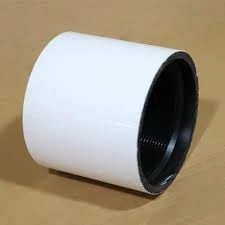- Afrikaans
- Albanian
- Amharic
- Arabic
- Armenian
- Azerbaijani
- Basque
- Belarusian
- Bengali
- Bosnian
- Bulgarian
- Catalan
- Cebuano
- Corsican
- Croatian
- Czech
- Danish
- Dutch
- English
- Esperanto
- Estonian
- Finnish
- French
- Frisian
- Galician
- Georgian
- German
- Greek
- Gujarati
- Haitian Creole
- hausa
- hawaiian
- Hebrew
- Hindi
- Miao
- Hungarian
- Icelandic
- igbo
- Indonesian
- irish
- Italian
- Japanese
- Javanese
- Kannada
- kazakh
- Khmer
- Rwandese
- Korean
- Kurdish
- Kyrgyz
- Lao
- Latin
- Latvian
- Lithuanian
- Luxembourgish
- Macedonian
- Malgashi
- Malay
- Malayalam
- Maltese
- Maori
- Marathi
- Mongolian
- Myanmar
- Nepali
- Norwegian
- Norwegian
- Occitan
- Pashto
- Persian
- Polish
- Portuguese
- Punjabi
- Romanian
- Russian
- Samoan
- Scottish Gaelic
- Serbian
- Sesotho
- Shona
- Sindhi
- Sinhala
- Slovak
- Slovenian
- Somali
- Spanish
- Sundanese
- Swahili
- Swedish
- Tagalog
- Tajik
- Tamil
- Tatar
- Telugu
- Thai
- Turkish
- Turkmen
- Ukrainian
- Urdu
- Uighur
- Uzbek
- Vietnamese
- Welsh
- Bantu
- Yiddish
- Yoruba
- Zulu
3 inch steel pipe coupling
Understanding 3 Inch Steel Pipe Couplings Essential Components in Piping Systems
In the realm of industrial applications, particularly in plumbing, oil and gas, and various construction projects, steel pipe couplings play a pivotal role in ensuring the effective and safe transportation of fluids and gases. This article delves into the significance of 3-inch steel pipe couplings, exploring their types, applications, installation methods, and maintenance to underline their importance in any piping system.
What is a Steel Pipe Coupling?
A pipe coupling is a plumbing fitting used to connect two pieces of pipe together, allowing for the continuation of a pipeline. Steel couplings come in various sizes, and the 3-inch designation refers to the diameter of the pipes it connects. These fittings can be threaded or welded onto the pipes, and they are essential for creating a secure and leak-tight joint.
Types of Steel Pipe Couplings
There are primarily two types of couplings used for steel pipes threaded couplings and welded couplings.
1. Threaded Couplings These fittings have internal threads and are designed for pipes that also possess external threads. Installing a threaded coupling is a straightforward process as it merely requires screwing the pipes into the coupling. This method allows for easy disconnection if maintenance or modifications are needed.
2. Welded Couplings Welded couplings are permanently joined to the pipes through welding. This type of coupling is preferred in applications where a strong and permanent connection is necessary, such as in high-pressure systems. The welding process creates a robust joint, which can resist significant stress and pressure.
Applications of 3 Inch Steel Pipe Couplings
3-inch steel pipe couplings are widely used across various industries due to their versatility
- Oil and Gas Industry In this sector, these couplings connect sections of piping that transport crude oil, natural gas, and other hydrocarbons. The strength and durability of steel are crucial in ensuring the safety and efficacy of these transmission lines.
3 inch steel pipe coupling

- Water Supply and Sewage Systems Steel pipe couplings are often utilized in municipal water supply and sewer systems to connect different pipe sections and allow for system expansion or modification.
- Construction In building projects, 3-inch couplings are utilized in HVAC systems, fire sprinkler systems, and general plumbing. They help in routing water, gas, and other essential services throughout a building.
Installation of Steel Pipe Couplings
Installing 3-inch steel pipe couplings requires careful attention to detail to ensure a secure and leak-free connection.
1. Preparation Begin by cutting the pipes to the desired lengths and ensuring that the ends are smooth and free of debris. For threaded couplings, the threads on the pipes should be coated with pipe joint compound to create a leak-proof seal.
2. Assembly For threaded couplings, align the pipes with the coupling and hand-tighten before using a wrench to secure the connection. For welded couplings, position the coupling onto the pipe ends and weld around the joint, ensuring the weld is even and complete.
3. Inspection Once installed, it’s crucial to inspect the connections for any signs of leaks or weaknesses. A pressure test may be conducted to verify the integrity of the joint before the system is put into full service.
Maintenance of Steel Pipe Couplings
Regular maintenance is key to ensuring longevity and functionality. Inspect couplings periodically for signs of corrosion, wear, or leaks. Any deteriorating couplings should be replaced promptly to prevent leaks that could lead to significant operational issues.
Conclusion
3-inch steel pipe couplings are a vital component in various industries, ensuring seamless connections in pipelines. Understanding their types, applications, and installation methods can significantly enhance the efficiency and safety of any piping system. Whether in oil and gas, water transport, or construction, these couplings play an indispensable role in maintaining the integrity and operational capacity of piping networks. Proper care and maintenance will ensure that these robust fittings continue to function reliably throughout their lifespan.
-
Tubing Pup Joints: Essential Components for Oil and Gas OperationsNewsJul.10,2025
-
Pup Joints: Essential Components for Reliable Drilling OperationsNewsJul.10,2025
-
Pipe Couplings: Connecting Your World EfficientlyNewsJul.10,2025
-
Mastering Oilfield Operations with Quality Tubing and CasingNewsJul.10,2025
-
High-Quality Casing Couplings for Every NeedNewsJul.10,2025
-
Boost Your Drilling Efficiency with Premium Crossover Tools & Seating NipplesNewsJul.10,2025







